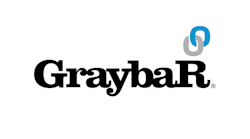A Look Into 6 Use Cases for CBRS —
The Federal Communications Commission’s (FCC) vision of making spectrum available on a shared basis is now a commercial reality. The Citizens Broadband Radio Service (CBRS) band includes 150 megahertz of spectrum in the 3.5 GHz band (3550 MHz-3700 MHz) that will be available to both licensed and lightly licensed users for applications ranging from industrial Internet of Things (IoT) to fixed-wireless access and private LTE networks.
Licensing in the CBRS band is neither exclusive nor completely open unlicensed spectrum. Instead, the FCC adopted a hybrid approach to the band, marrying elements of licensed and unlicensed use in a novel sharing regime. Similar to how companies like Uber and Airbnb have enabled the so-called sharing economy by leveraging existing assets owned and controlled by third parties to maximize their value through technology and sophisticated algorithms, so too does the FCC’s licensing regime in the CBRS band by taking underutilized government spectrum and making it available for commercial use.
The hallmark principle of the CBRS band is that usage rights are available on an opportunistic basis; spectrum in the band is generally available for commercial use on a use-it-or-lose-it basis.
InvisiLight® Solution for Deploying Fiber
April 2, 2022Go to Market Faster. Speed up Network Deployment
April 2, 2022Episode 10: Fiber Optic Closure Specs Explained…
April 1, 2022Food for Thought from Our 2022 ICT Visionaries
April 1, 2022Ready, Set, Innovate
CBRS is an important tool in the tool chest of carriers and enterprises that can be used on its own or in tandem with cellular, Wi-Fi, and other network solutions, to provide reliable communications to the public, employees, and machines. Most of the mobile applications available on cellular devices today are successful because they use LTE technology, which offers much faster speeds, among other things, than previous generations of cellular. Because CBRS spectrum will also use LTE technology, it can offer true mobility, as well as strong security and higher quality of service than unlicensed Wi-Fi networks.
Providing public communications capabilities for guests while supporting private back-of-house connectivity for staff and devices in the hospitality industry is a primary use case for CBRS.
It’s relatively easy to hack into Wi-Fi gateways, but CBRS provides additional layers of security to thwart bad actors. Enterprises are particularly interested in developing network solutions that protect sensitive data and that help them avoid financial and reputation difficulties associated with data breaches.
Quality of service will be higher using CBRS spectrum because it will improve speed, bandwidth, and data transfer capacity — which will be a major differentiator over existing private network options.
Additional benefits of CBRS include capacity, flexibility, control, and accessibility. Experts believe CBRS will democratize LTE wireless technology. The diversity of companies participating in and developing the CBRS ecosystem is remarkable. There is tremendous interest and participation from small to large operators and OEMs, startup companies and technology stalwarts such as Facebook and Amazon.
The CBRS supplier ecosystem is already looking beyond 4G-LTE and into 5G-NR. CBRS may be the first mid-band spectrum in the US to observe 5G deployments at scale. Industry is promoting many innovative 5G use cases, including cloud gaming, extended reality, and healthcare.
CBRS will expand the value of mobile networks and take on more new use cases than have been possible with an unlicensed and licensed spectrum regime, empowering many new connected services and entrants.
The Players
One remarkable aspect of the potential use cases for CBRS is that it is expected to play a pivotal role across multiple industry sectors, not just the mobile sector. For example, as illustrated in Figure 1, many expect that CBRS will be a key spectrum platform for distributed antenna system (DAS) operators, fixed wireless Internet service providers (WISPs), and cable operators. While many expect mobile operators will use CBRS to expand small cell capacity for mobile LTE, other service providers such as cable and WISPs are expected to utilize CBRS to enhance Last Mile and access solutions, often over fixed wireless architecture. The CBRS Alliance is driving shared use of the 3.5 GHz spectrum, and certifies devices that can be used under the name OnGo.
Figure 1. CBRS is expected to support a wide variety of use cases ranging from network densification and expanded Wi-Fi offerings to stadium coverage, industrial applications, and rural coverage solutions. (Source: Davis Wright Tremaine)
Six of the many players to benefit from CBRS include:
1. Mobile Network Operators (MNOs)
With CBRS, mobile network operators can secure a cost-effective solution for expanding capacity and coverage as well as building out their 5G networks. Moreover, CBRS provides better coverage for both indoor and outdoor mobile solutions compared to other unlicensed bands like 5 GHz. CBRS base stations can deliver a higher level of network quality control desired with LTE-based solutions without the challenges of sharing the band with Wi-Fi.
As such, carriers are likely to present one of the first use cases for CBRS. With data usage exploding for both consumer and machine communications, existing macro networks are experiencing increasing demands on network capacity. Carriers are expected to move quickly in the CBRS space to address their need for additional capacity. CBRS presents an opportunity for these carriers to offload network traffic onto local CBRS networks, resulting in less congestion and better data rates for both the offloaded traffic and for the traffic remaining on the macro network. This increases quality of service for all customers.
Verizon Wireless, for example, has said it plans to supplement its outdoor small cell network with CBRS small cells, and that the first use it envisions for the spectrum band is offloading network traffic from other spectrum bands.
2. New Entrants
Beyond the carrier use case, industrial and manufacturing operations are interested in CBRS to support emerging Internet of Things (IoT) applications involving sensors and beacons that constantly relay data about machine operations in factories and other automated systems to a control center. Using a local, secure, dedicated wireless network to control the delivery of machine data will be essential to the safe, cost-effective, and efficient operation of IoT-connected equipment.
Private networks are another primary use case for the CBRS band. Enterprises, property owners, utilities, municipalities, and others, could set up private networks that offer the same voice and data communication capabilities that Wi-Fi provides today, but with better security features and other benefits. This allows small-cell solutions to become disassociated from the carrier and associated instead with the enterprise, creating a true private environment that is unconnected from the carrier network unless a connection is established.
3. Multiple Service Operators (MSOs)
For cable operators seeking to build out an LTE network, CBRS provides a smart traffic offload option. MSOs can enter the mobile wireless industry using a Mobile Virtual Network Operator (MVNO) strategy. CBRS solutions can help MSOs by reducing costs through the deployment of MSO-owned small cell networks, combining current networks to provide optimal coverage and capacity, as well as leveraging mobile network operators that need densification.
For the investment of a Wi-Fi solution, MSOs can build a valuable wireless LTE network that is dependable, fast and profitable.
MVNOs are also eyeing CBRS as a potential fixed broadband application solution that would allow them to gain a stronger foothold in broadband delivery, essentially transforming themselves into mobile operators in their own right. This is particularly likely in rural areas.
4. Neutral Hosts
With CBRS solutions, neutral hosts can deploy and manage a more robust enterprise-level network that is as powerful inside as it is outside. Perfect for large venues such as stadiums, airports, skyscrapers, and hospitals, CBRS solutions are network-agnostic, and can easily accommodate overflow traffic at sites that are too small for mobile operators to consider, yet too complex for enterprises to tackle alone.
5. Private LTE Networks
For large businesses that require a closed or private enterprise wireless network, CBRS offers more secure connectivity than Wi-Fi and at the high speeds and quality of an LTE wireless network. Whether business takes place in a tall office building, a college campus, or a large remote site (e.g., the mining industry), CBRS solutions allow local private LTE networks to be built for the entire enterprise regardless if it is in-building or outdoors.
Facilities that serve both the public and back-of-house operations, both of which need communication capability, could benefit from a CBRS configuration. An enterprise or facility could, for example, deploy a small cell on their premises running CBRS that could provide both multi-carrier support for public users and secure, private back-office communications for staff.
An example of this is stadiums or arenas that serve the public. In a football stadium, for example, CBRS networks could provide multi-carrier communications capabilities for fans attending an event, while also supporting two-way radio communications for restaurant employees, office personnel, and security personnel, working in the venue. CBRS could even augment or replace outdated UHF systems that coaches and players use today for sideline communications.
Other enterprise use cases are equally compelling:
• Many hospitals today run separate dedicated networks to track equipment and people within their campuses. CBRS networks could eliminate some of the layers that are needed today in complicated deployments.
• The hospitality industry could host back-office operations on a private, secure CBRS network, while front-of-the-house, public communications could remain on public networks like Wi-Fi.
• Retailers could employ CBRS networks to track inventory and securely transfer sensitive customer data.
6. Wireless Internet Service Providers (WISPs)/Utilities
For businesses that depend on data transmissions from fixed-wireless access points, CBRS solutions using SAS-enabled shared spectrum can help create a robust network that is second to none. By utilizing the 3.5 GHz radio band, WISPs and utility companies can build highly reliable wireless networks that offer cost-effective fixed wireless access with low latency, and that deliver real-time communications to all their sensors, cameras, and industrial IoT.
Similarly, cities and towns may find that CBRS provides them with an excellent opportunity to deploy municipal networks that can support IoT smart buildings and smart-city applications that promise to increase efficiency and save money.
Conclusion
CBRS spectrum coming to market will create new network providers, new methods of spectrum sharing and a new ecosystem of devices. While mobile operators will likely be first to market to take advantage of offloading capabilities, many new players will enter the space. Neutral-host providers will offer infrastructure as a service to smaller enterprises. Larger enterprises will be able to develop their own private LTE networks, where they can gain operational efficiencies that come from the greater capacity, quality of service, and security, that is a characteristic of the LTE protocol.
As the market develops, lessons learned through network deployments will encourage adopters to invent new ways to communicate, whether by data or voice, that were not imagined at launch.
Like this Article?
Subscribe to ISE magazine and start receiving your FREE monthly copy today!
Resources
1. https://www.lightreading.com/cloud/iot-and-edge/verizon-t-mobile-amazon-hint-at-cbrs-35ghzambitions/d/d-id/749463
2. https://www.aglmediagroup.com/verizon-promises-smaller-lighter-small-cells/
4. https://www.multichannel.com/news/ruckus-gears-cbrs-band-418251
Co-Authored By Rikin Thakker, Mark Gibson, and Eric Toenjes
This article is adapted from the WIA white paper The CBRS Opportunity: New Spectrum, Stakeholders and Devices, by the WIA Innovation & Technology Council, March 2020. Authors include Rikin Thakker, Multicultural Media Telecom and Internet Council (MMTC); Mark Gibson, CommScope; and Eric Toenjes, Graybar. Federated Wireless also contributed to this report. For more information about, and to download the white paper, please visit https://wia.org/wp-content/uploads/CBRSOpportunity_paper-web-NEW.pdf
For more information about the Wireless Infrastructure Association (WIA), please email [email protected] or visit www.wia.org. Follow WIA on Twitter @WIAorg.











